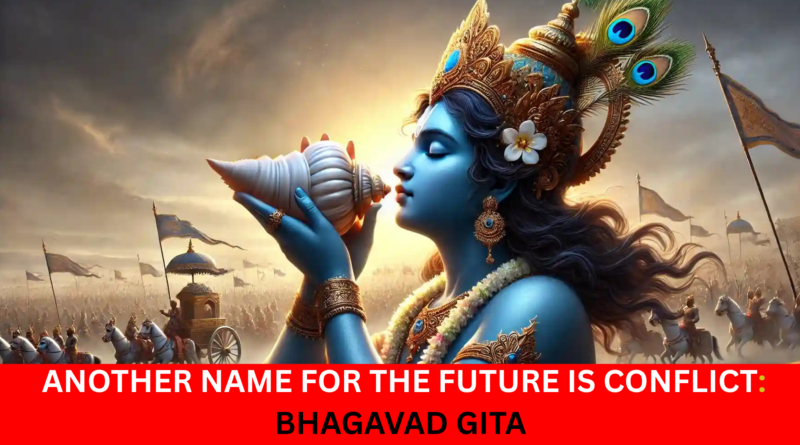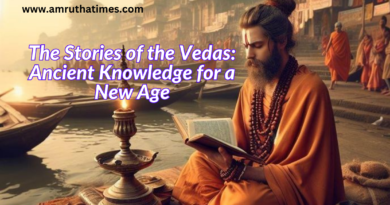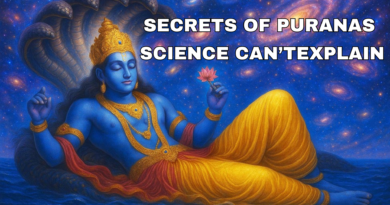ANOTHER NAME FOR THE FUTURE IS CONFLICT: BHAGAVAD GITA
The Bhagavad Gita, an ancient Indian scripture embedded within the Mahabharata, is more than a spiritual guide it is a timeless psychological and philosophical treatise on human nature, duty, and conflict. The opening scene itself unfolds on the battlefield of Kurukshetra, a symbol of the inner and outer wars we all must face. The statement “Another name for the future is conflict” resonates deeply with the Gita’s teachings, as it acknowledges that human evolution, both individually and collectively, is marked by struggle, choice, and transformation.
The Battlefield as a Metaphor
The Bhagavad Gita begins with the great warrior Arjuna standing on the battlefield, confused and conflicted. He sees his relatives, teachers, and friends arrayed on both sides, ready to fight. Overwhelmed by emotion and moral confusion, he puts down his weapons and refuses to fight. This moment of inner conflict is symbolic of what every human faces when torn between values, desires, and responsibilities.
In this setting, Krishna the divine charioteer and spiritual guide steps in to offer wisdom. Krishna doesn’t offer an escape from conflict. Instead, he urges Arjuna to rise, to face it. This is a core message of the Gita: the path forward, into the future, inevitably involves conflict both internal and external.
Conflict as Growth Catalyst
Why does the Gita embrace conflict rather than shun it? Because conflict is not inherently negative. It is a condition of change. When Arjuna hesitates to fight his loved ones, Krishna reminds him of his dharma his sacred duty as a warrior.
Krishna says:
“You have the right to perform your duty, but not to the fruits of your actions.” (Gita 2.47)
This suggests that humans must act without attachment to outcomes. The future, uncertain as it is, must be met with action rooted in righteousness, even if that action leads through the fires of conflict. Peace without truth, according to the Gita, is an illusion. It is only through facing difficult choices that one grows spiritually.
Types of Conflict in the Gita
The Gita addresses several types of conflict that remain relevant in the modern context:
Inner Conflict
Arjuna’s dilemma is deeply psychological should he follow his heart or his duty? This type of internal battle is one we all face: between desires and responsibilities, between fear and courage, between ego and higher purpose.
Moral Conflict
The idea of right and wrong is not always clear-cut. Arjuna sees war as inherently wrong, but Krishna challenges this notion by introducing the concept of svadharma personal duty and the moral responsibility to act for justice.
Social and Political Conflict
The Mahabharata is a war for justice, against tyranny and manipulation. The Gita suggests that standing up to injustice is not just a right, but a responsibility. Even today, the struggle for equity, freedom, and truth mirrors this ancient lesson.
Spiritual Conflict
The Gita also speaks to the existential struggle of understanding the self. Krishna teaches that the body is temporary, but the soul (atman) is eternal. Recognizing this truth is the beginning of spiritual liberation, but it requires the difficult process of detachment and discipline.
Facing the Future with Courage and Clarity
The Gita acknowledges that the path of righteousness (dharma) is often the harder one. Taking the easy route avoiding confrontation, neglecting responsibility, or surrendering to fear leads to stagnation. The future cannot be shaped by avoidance. It demands engagement, and engagement brings conflict.
“Whenever dharma declines and adharma rises, I manifest myself.” (Gita 4.7)
This verse reflects a cyclical truth: every era will face its own chaos, injustice, and moral decay. It is through conflict that the divine manifests not in silence or withdrawal, but in righteous action.
Modern Relevance
In today’s world, whether it is climate change, social injustice, technological disruption, or political division, the future feels like an arena of conflict. And yet, the Gita teaches that this is not a curse it is an opportunity. Conflict forces individuals and societies to examine themselves, make conscious choices, and align actions with higher principles.
Conflict sharpens clarity. It tests character. It destroys illusions. Just as fire purifies gold, conflict purifies intention. When approached with courage, wisdom, and selflessness as taught by Krishna it becomes the path to evolution.




